 I am a Catholic in recovery. When I was a kid, people thought Mass had to be said in Latin. (Apparently God spoke only one language back then.) I sat through many a Latin Mass on insufferably hot afternoons, looking out the window, tugging at my collar and telling myself stories set far, far away in lands where things were much more interesting. I was only ten, but I clearly remember wondering how it could possibly be worship to God if I didn’t know what I was saying, what the priest was talking about or what the congregation was singing. If I didn’t know what I was saying why would that mean anything to God?
I am a Catholic in recovery. When I was a kid, people thought Mass had to be said in Latin. (Apparently God spoke only one language back then.) I sat through many a Latin Mass on insufferably hot afternoons, looking out the window, tugging at my collar and telling myself stories set far, far away in lands where things were much more interesting. I was only ten, but I clearly remember wondering how it could possibly be worship to God if I didn’t know what I was saying, what the priest was talking about or what the congregation was singing. If I didn’t know what I was saying why would that mean anything to God?I believe in God and Jesus and I know exactly WHO my Lord is. I get all that. But the whole Catholic thing is a life long source of fascination to me. This fascination only grows stronger here in San Antonio where they take the whole thing very seriously.

The Jesus you see depicted in the Missions and the churches here isn’t calmly looking heavenward with impassive eyes as spikes are driven into his bloodless hands. This Jesus suffers. The depictions of him being literally tortured to death show bone and blood and pain. Canadian church ladies would faint dead away if they saw what the Spanish have created here. I've decided against posting the really bloody pics here since kids might be seeing them. But they could have been drawn out of a Stephen King novel.
The Spanish Jesus isn’t white either. Going back one more time to all those years in Catholic school, I could never figure out why Jesus had blue eyes. I could see no reason why he had the same skin color as me either, when he wasn’t born anywhere near Canada. The Spanish Jesus can be brown or white or even a little on the yellow side. I like this a lot.
San Antonio is full of churches. And the churches are full of art and people and interesting pictures just waiting for some guy with a camera to come along and shoot to his heart’s content. Just do so with a little respect and there is a very good possibility some frustrated but hulking paritioner won't pound you into the ground.
So I did.
Shooting inside churches, regardless of your religious beliefs, calls for a few changes to the way you (or I) would ordinarily do things.

1) You need to be gentle in the use of your flash. A flash can be disruptive to people who are praying and I think photographers have to realize that, on at least one plane, they are guests in someone else’s house. Most cameras have a museum setting that allows you to take shots without using your flash. Yours may be called “candlelight” or “night portrait.”
2) Since churches often have really low light conditions, you may want to set your camera on a jam or the back of a bench, and use your self-timer. This allows you to set your aperture as narrow as you like. You don’t care how long the exposure is since the self timer means you don’t have to worry about camera shake. Remember that flash often blows detail and atmosphere right out of a subject.
 3) Think about how other people have photographed the same thing you’re after…and don’t shoot that way. Try very hard to see a statue from a new angle. Look at it from the floor or above. Change the angle radically. Try skewing the picture, try messing with your White Balance settings to get new and wonderful effects. The picture to the left is a good example. With a straight on shot, the boy is a very minor component. Changing my angle allowed me to show a boy contemplating spikes as an out of focus Jesus is murdered in the background.
3) Think about how other people have photographed the same thing you’re after…and don’t shoot that way. Try very hard to see a statue from a new angle. Look at it from the floor or above. Change the angle radically. Try skewing the picture, try messing with your White Balance settings to get new and wonderful effects. The picture to the left is a good example. With a straight on shot, the boy is a very minor component. Changing my angle allowed me to show a boy contemplating spikes as an out of focus Jesus is murdered in the background.4) When shooting statues, try to use one facet of the artwork: a hand or a smaller component of the overall picture. If your intent is to take a good picture of a complete statue, you are simply taking a picture of someone else’s artwork. Try taking a new view of what they have done to create completely new art.
5) Take LOTS of pictures. I say this a lot. But it’s really important. Who cares if you take a hundred shots to get one good one? You still have that good one. It’s digital. Relax. Delete the rest.



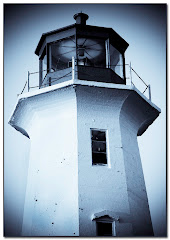


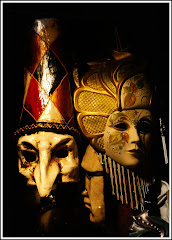
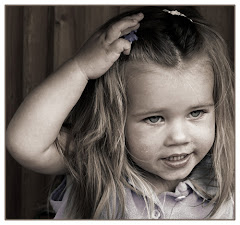




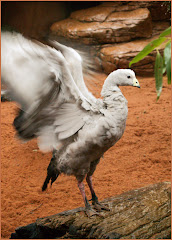
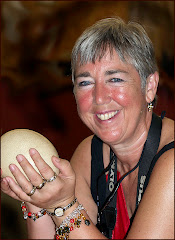


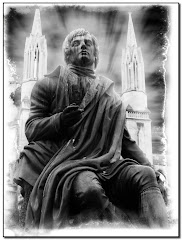

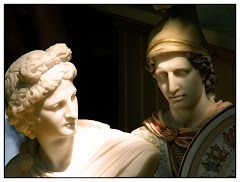

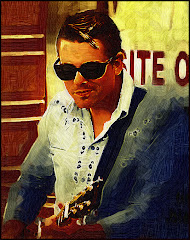

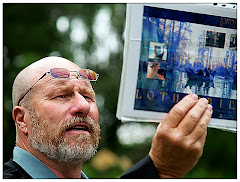

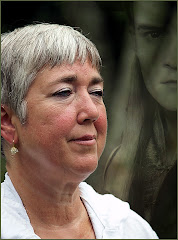


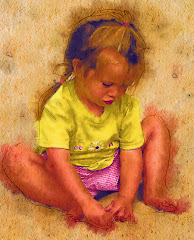
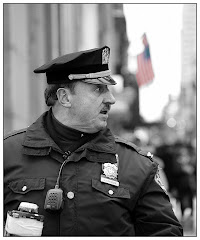
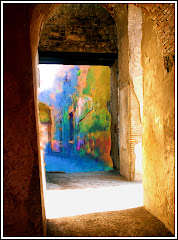



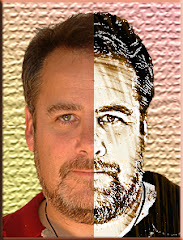
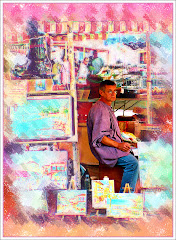
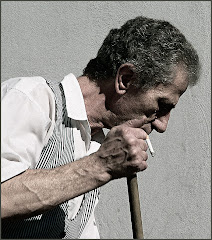

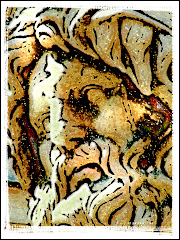

No comments:
Post a Comment